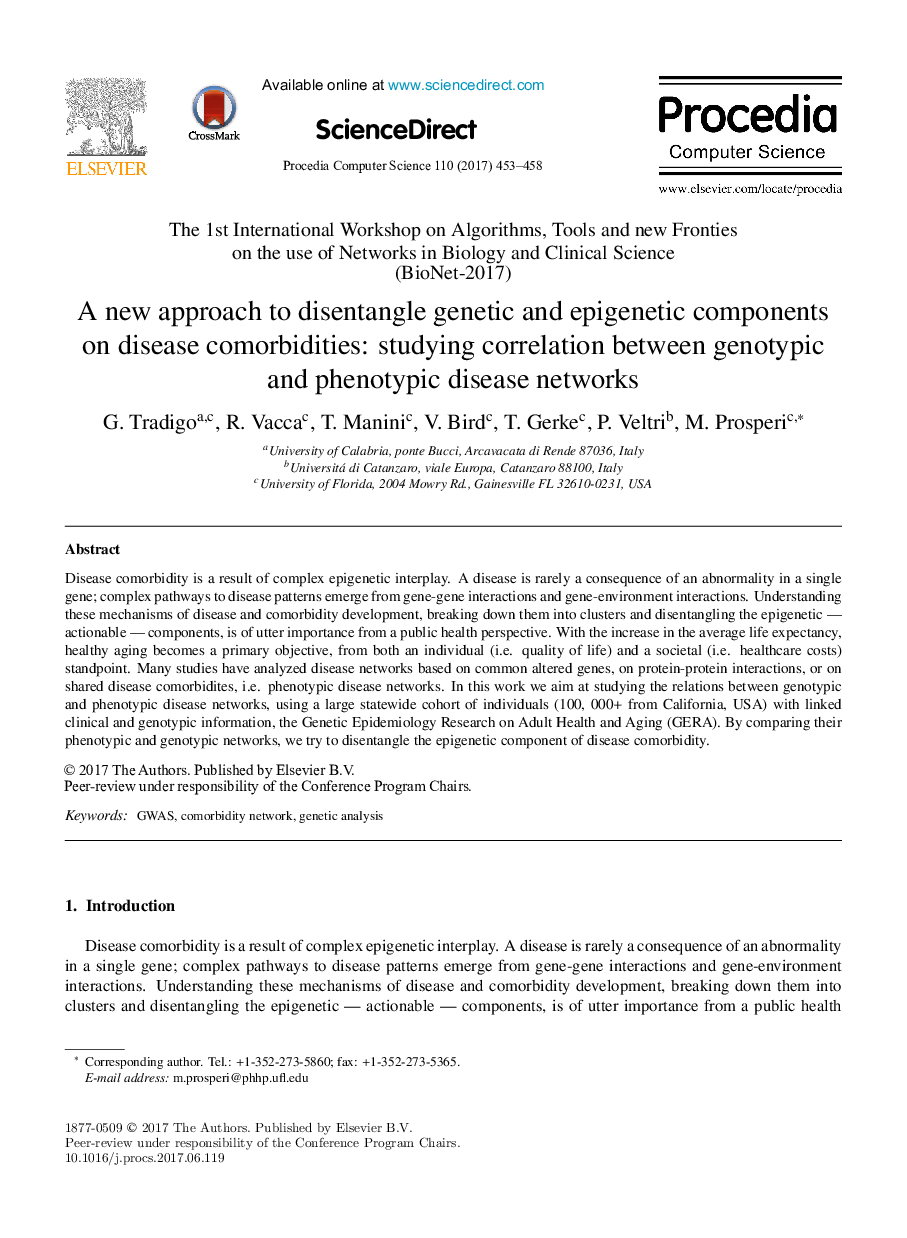| Article ID | Journal | Published Year | Pages | File Type |
|---|---|---|---|---|
| 4960846 | Procedia Computer Science | 2017 | 6 Pages |
Disease comorbidity is a result of complex epigenetic interplay. A disease is rarely a consequence of an abnormality in a single gene; complex pathways to disease patterns emerge from gene-gene interactions and gene-environment interactions. Understanding these mechanisms of disease and comorbidity development, breaking down them into clusters and disentangling the epigenetic - actionable-components, is of utter importance from a public health perspective. With the increase in the average life expectancy, healthy aging becomes a primary objective, from both an individual (i.e. quality of life) and a societal (i.e. healthcare costs) standpoint. Many studies have analyzed disease networks based on common altered genes, on protein-protein interactions, or on shared disease comorbidites, i.e. phenotypic disease networks. In this work we aim at studying the relations between genotypic and phenotypic disease networks, using a large statewide cohort of individuals (100, 000+ from California, USA) with linked clinical and genotypic information, the Genetic Epidemiology Research on Adult Health and Aging (GERA). By comparing their phenotypic and genotypic networks, we try to disentangle the epigenetic component of disease comorbidity.
